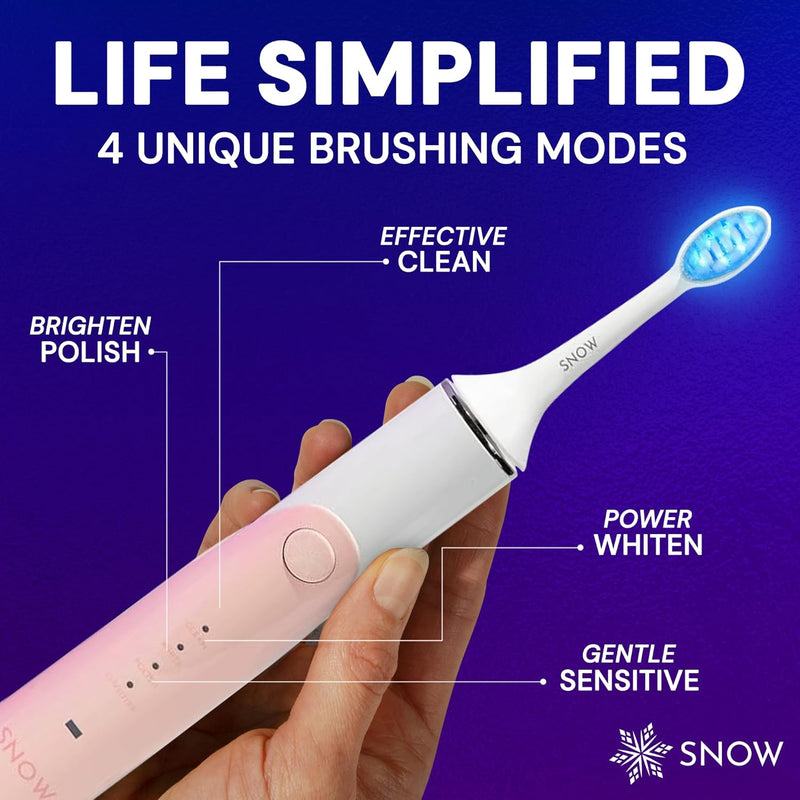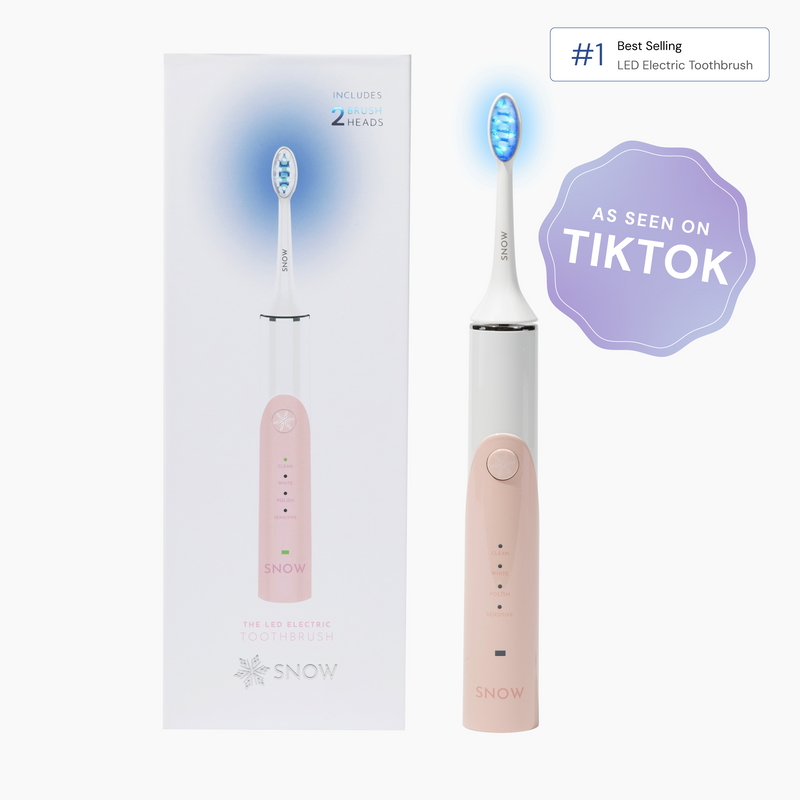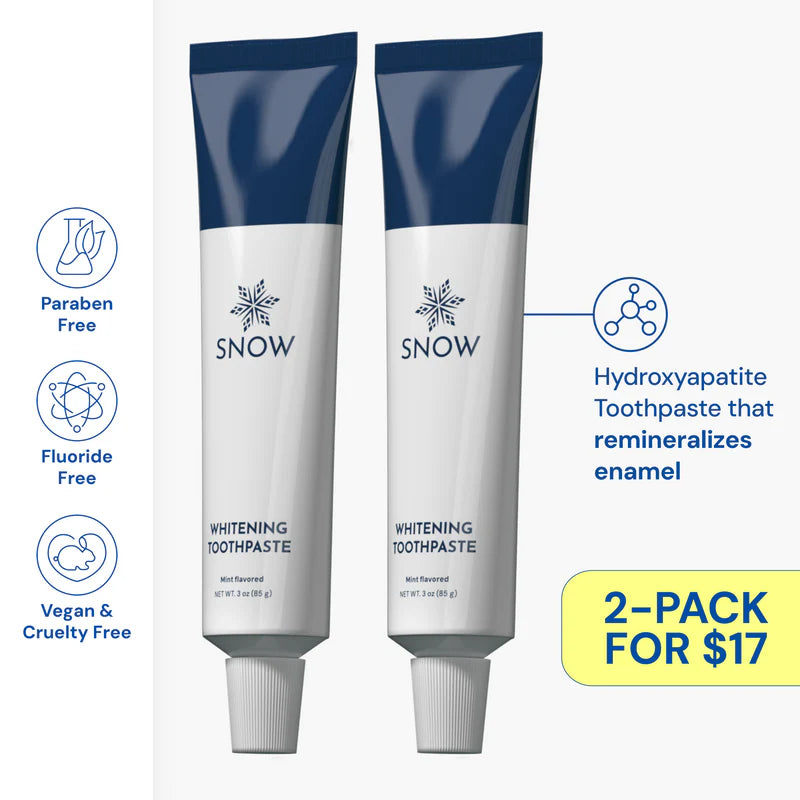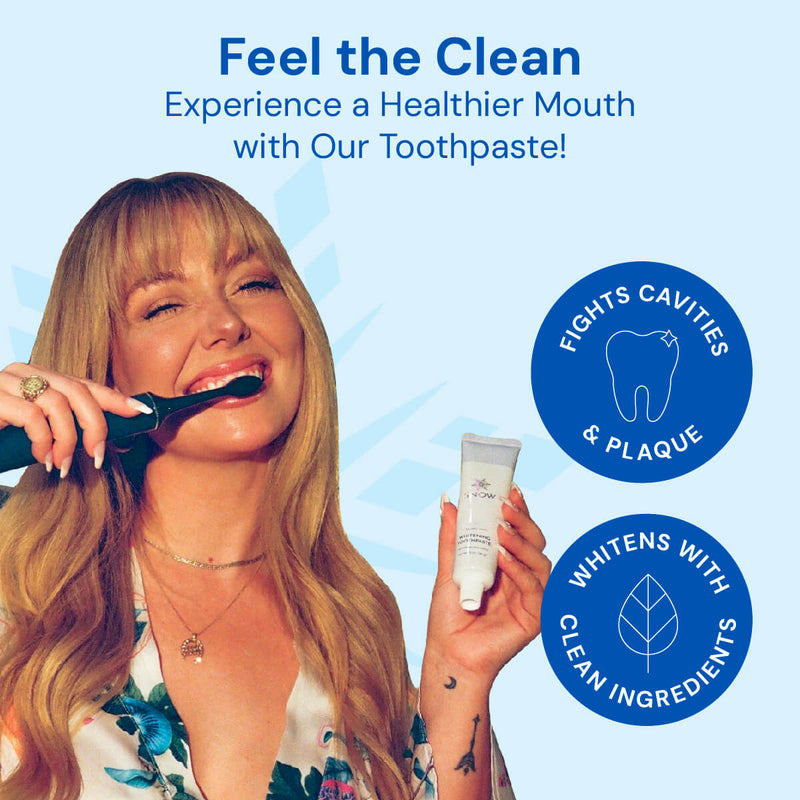Maintaining our toothbrushes' cleanliness is crucial to avoid spreading germs and bacteria.
This post will discuss various methods for disinfecting toothbrushes, including using heat, UV sanitizer light, and other cleaning solutions. We will also discuss when it may be necessary to replace your toothbrush.
By the end of this post, you will better understand how to disinfect toothbrushes properly and keep your oral hygiene in check.
HOW CAN I CLEAN MY TOOTHBRUSH?
There are several ways to clean your toothbrush:
- Rinse your toothbrush thoroughly with water before and after each use. This will help remove any food particles or debris that may have accumulated on the bristles.
- Use hot water to clean your toothbrush. The high temperature will help kill any germs or bacteria that may be present on the bristles.
- Soak your toothbrush in antibacterial mouthwash for several minutes. This will help disinfect the bristles and kill germs and bacteria.
- Use UV toothbrush sanitizer to disinfect your toothbrush. A UV sanitizer uses ultraviolet light to kill germs and bacteria.
- Use a toothbrush cleaning solution specifically designed for this purpose. These solutions are often made with baking soda or hydrogen peroxide to help kill germs and bacteria.
It's important to note that replacing your toothbrush every three to four months is recommended or earlier if the bristles are frayed. Also, if you have a cold, flu, or other infection, it's best to replace your toothbrush after you've recovered to avoid re-infection.
HOW CAN I KEEP MY TOOTHBRUSH BRISTLES CLEAN?
Here are some tips to keep your toothbrush clean:
- Rinse your toothbrush thoroughly before and after each use (preferably hot water). This will help remove any food particles or debris that may have accumulated on the bristles.
- Store your toothbrush in an upright position and a well-ventilated area. This will help prevent the growth of bacteria and mold.
- Keep your toothbrush away from other toothbrushes to avoid cross-contamination.
- Clean your toothbrush holder regularly.
- Avoid storing your toothbrush in damp places, like a closed medicine cabinet or in a sealed container. Moisture can encourage the growth of bacteria and mold.
- Use a toothbrush cover or cap to protect your toothbrush from dust and other contaminants when not in use.
- Avoid sharing your toothbrush with others.
- If you have been sick, it is recommended to replace your toothbrush after you've recovered.
- Do not keep a wet toothbrush. Gently dry it when done using.
By following these tips, you can help keep your toothbrush clean and free of germs and bacteria, which will help maintain good oral hygiene and keep your teeth and gums healthy.
HOW OFTEN SHOULD I CLEAN MY TOOTHBRUSH?
The American Dental Association recommends cleaning your toothbrush at least once a week or more often if you have been sick.
Rinsing your toothbrush with hot water before and after each use is a good habit for keeping your toothbrush clean and removing any food particles or debris that may have accumulated on the bristles.
Additionally, if you have been sick, it is recommended to replace your toothbrush after you've recovered, as the bristles harbor bacteria and germs.
It is also recommended to replace your toothbrush every three to four months or earlier if the bristles are frayed.
HOW TO CLEAN AN ELECTRIC TOOTHBRUSH?
Cleaning electric toothbrushes is similar to cleaning a manual toothbrush but with a few additional steps. Here are the steps to clean an electric toothbrush:
-
Unplug the toothbrush from its charging base and remove the brush head.
-
Rinse the brush head thoroughly under running water to remove any toothpaste or debris that may have accumulated.
-
Use a soft-bristled brush or a toothbrush to gently scrub the brush head, especially to the bristles and the areas around the follicles.
-
Use a damp cloth or sponge to clean the handle and charging base of the toothbrush.
-
Allow the brush head and handle to air dry completely before reassembling the toothbrush and plugging it back into the charging base.
-
Some manufacturers recommend running the toothbrush head through the dishwasher for cleaning. Be sure to check the manufacturer's manual or website for specific cleaning instructions.
It's also important to note that, like manual toothbrushes, electric toothbrush heads should be replaced every 3-4 months or when the bristles are frayed to ensure optimal cleaning. And if you have been sick, it is recommended to replace the toothbrush head after you've recovered.
CONCLUSION
Maintaining the cleanliness of our toothbrushes is essential for good oral health and preventing the spread of germs and bacteria. Whether you have a regular toothbrush or electric toothbrush, it's important to rinse it thoroughly with warm water or hot water before and after each use and to clean it regularly, at least once a week.
There are various methods for cleaning toothbrushes, including using heat, UV light, cleaning solutions, and antiseptic mouthwash. Additionally, replacing your toothbrush or toothbrush head is recommended every three to four months or earlier if the bristles are frayed.
If you have been sick, replacing your toothbrush after you've recovered is best. By following these simple steps, you can ensure that your toothbrush is clean and ready to clean your teeth effectively.
FAQS
SHOULD YOU DISINFECT YOUR TOOTHBRUSH?
Cleaning your toothbrush makes sense if you want to avoid becoming sick because your mouth is home to millions of microorganisms.
A stock of fresh toothbrushes should be kept on hand so you can quickly replace the used one every three months, and you should clean your toothbrush once a week.
HOW CAN I DISINFECT MY TOOTHBRUSH NATURALLY?
To naturally disinfect your toothbrush, use baking soda or hydrogen peroxide. Stir one cup of hot water and two tablespoons of baking soda together, then allow your toothbrush to soak in the solution for 15 minutes before letting it air dry. For better results, you can mix the hydrogen peroxide and baking soda.
CAN I DISINFECT MY TOOTHBRUSH WITH BOILING WATER?
Even though boiling hot water damages your brush's plastic, it does an excellent job of eliminating the bacteria that develop over time. To eliminate the vast majority of germs, bring a small pot of water to a boil on the stove, then place the head of your toothbrush into the boiling water for at least three minutes.
WILL ALCOHOL DISINFECT A TOOTHBRUSH?
You can also use 70% alcohol. Keep the toothbrush away from liquid of any kind, including mouthwash liquid or any other liquid. When you're finished brushing, give the head a quick rinse in the sink, clean the handle with a disinfecting wipe or spray, and stand the bristles upright to air dry.
WHAT IS THE MOST EFFECTIVE METHOD FOR STERILIZING A TOOTHBRUSH?
Put your toothbrush into boiling water for around three minutes. Even though it can be rough on your toothbrush, boiling water is the most effective way to kill bacteria.
A toothbrush can be put into the silverware compartment of the dishwasher to be sanitized. The best way to clean your toothbrush is to put it in the dishwasher's hot cycle without soap.
WILL ANTIBACTERIAL MOUTHWASH CLEAN TOOTHBRUSH BRISTLES?
In addition to killing the bacteria in your mouth, antibacterial mouthwash can also help keep your toothbrush clean. Add mouthwash to a small cup, swirl the toothbrush bristles for 30 seconds, then remove.





































































